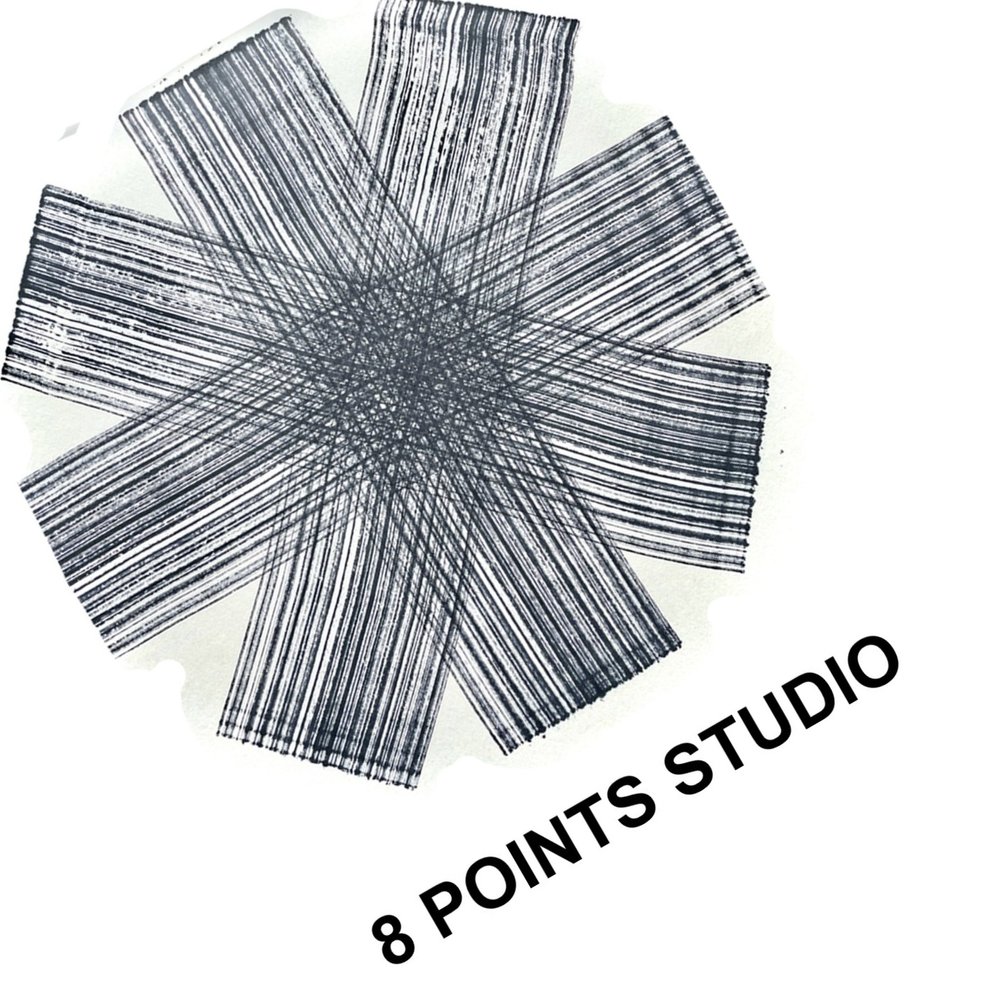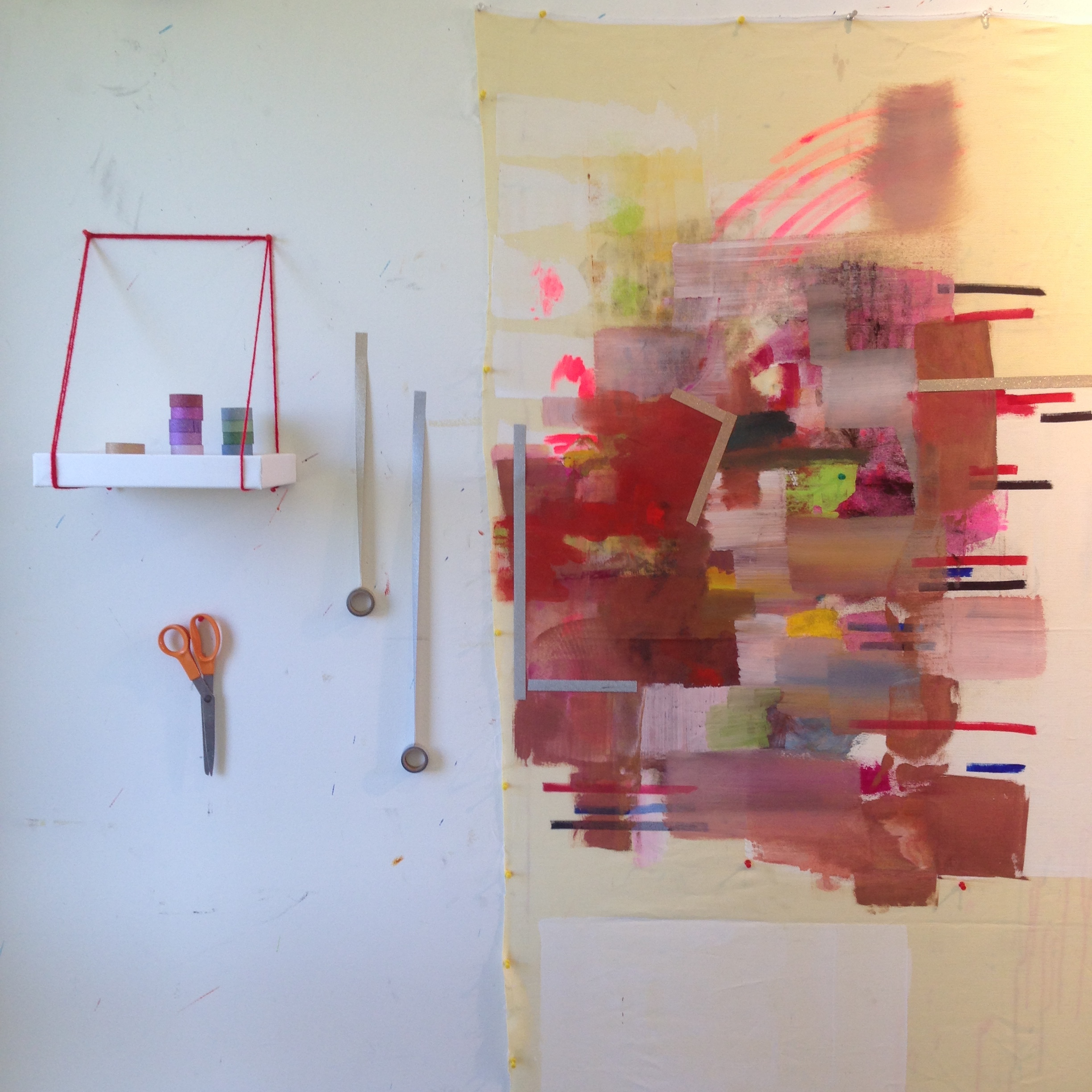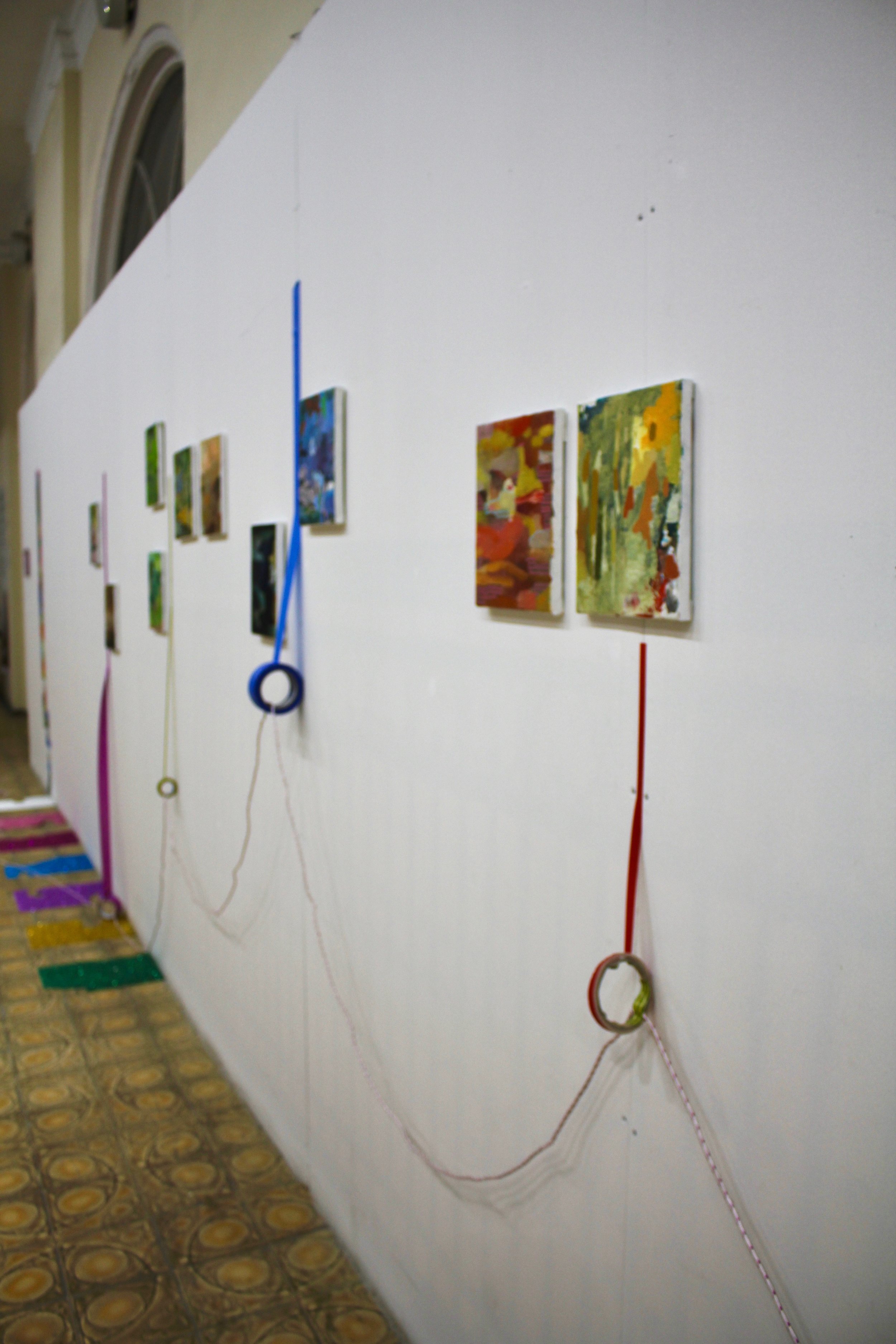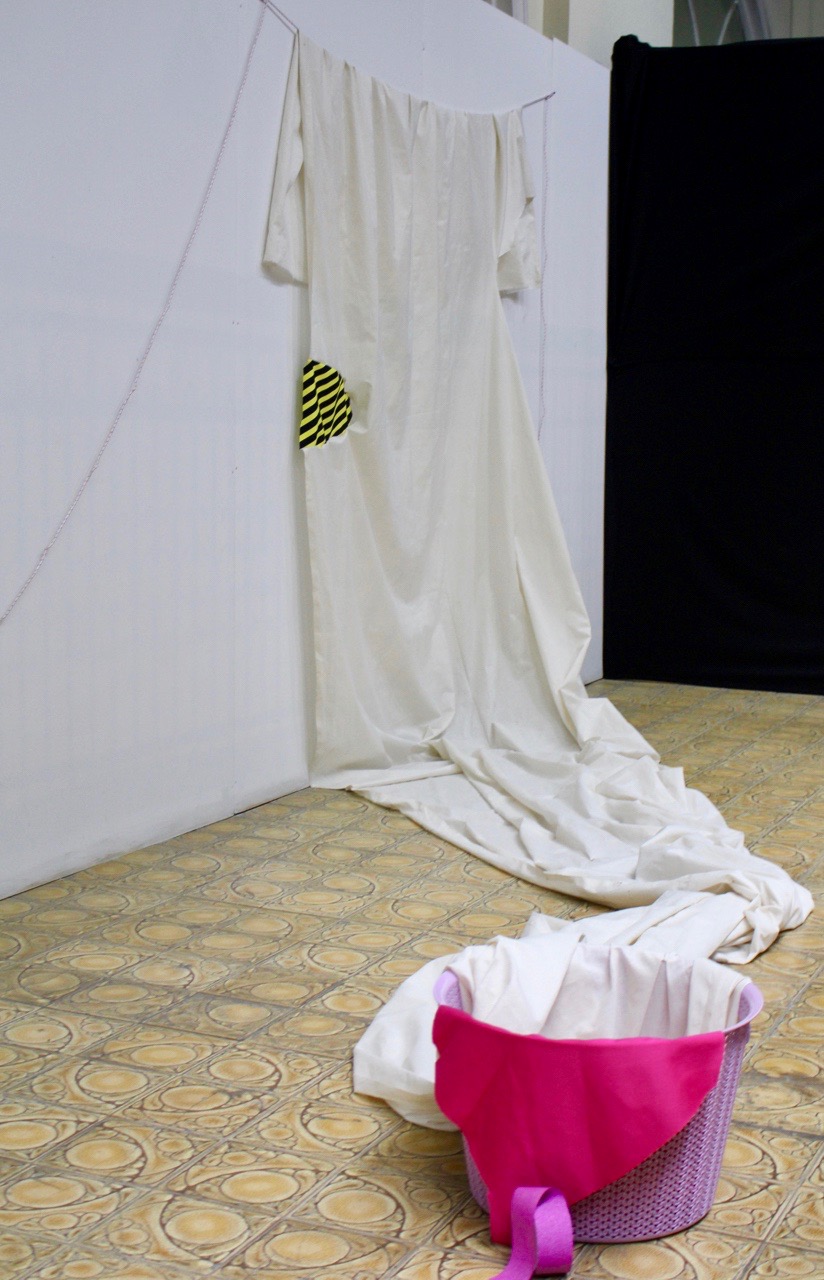Scissor Language is an installation I made in November 2017 in Tbilisi, Georgia, as part of Artisterium 10, Tbilisi 10th Annual International Contemporary Art Exhibition and Events. Given such a weighty Exhibition title, I aimed for a bit of levity, and made an installation that combines the language of painting, demographics... and laundry.
Our umbrella project, called Living Room 3, curated by Gabriel Adams, is part of a series of Living Room exhibitions which mix "lounge, workshop, performance and game space in an experimental setting." The idea is for artists to gather in an international location, respond to the site, and make work on the spot.
The installation began as an idea about the overlap between the painting process and geopolitical activity. I was partly inspired by Georgia's alternating history, going back centuries, of annexation and independence. But idea was rooted in a shift occurring within my painting habits over the last year. Up until that point I had been making fairly representational landscapes, working with transparent paint, vague edges, few straight lines, and a deliberate multi stability of forms. At a certain point that coincided with a move towards abstraction and its inherent uncertainty, I started leaning towards flat paint, clearly defined spaces, and hard edges, and began to notice some overlap between my newfound painting habits, and the language of political unrest. Borders, Edges, Takeovers, Revelations: there is real power in defining an edge with a bold line, or painting out a section that isn’t working, with flat, opaque paint.
Building a Painting/the Demographics of Tape/Studio Wall 2017.
The question formed: to what degree are my painting habits resonating with events happening on a global scale? Could defining an edge within a painting space be motivated by a miniature appetite for control, but one still on the same spectrum as that of a ruling power imposing its will on a neighbor? Are straight lines compelling because they don't exist in nature? And is painting over a successful painting (because I changed my mind) taking a necessary risk, or a waste of paint--and might this habit, this need for newness, be a bit like a military occupation? Without making light of the real lives of people affected by such maneuvers, I'm curious about what gradations of power actually look like, and if the way that power appears in an innocuous context, such as painting, actually has echoes in a larger, global context.
I imagined Scissor language as an attempt to cut through the linearity of borders, edges, time, to the territory of presence embodied in the act of painting. Presence, freedom, all at once-ness vs the linear form of clothesline, tape, and hallway. The reference to laundry and clothesline performs a connecting role: the quotidien chores to which we are all bound; the grounding element in a life, and the through line of daily, practical activity that unites people across borders.
The actual installation became a diagram of its own evolution. Walking the length of the hallway is to enter a timeline of my process and week in Tbilisi. The installation begins with an unopened clothesline mounted on the wall; a functional object transformed into a presence worthy of contemplation; a reversing of the quotidian (laundry) into a kind of beautiful object hood. And a form of potential, of linearity bound up.
Following is a vertical line of drawings that connects to a series of glitter paper paintings on the floor, sections cut out, and arranged with even gaps in between to reveal an arabesque tile floor pattern. The linear placement of drawings and glitter paper are a nod to the linearity of the hallway and an attempt to enter it; to speak its language, and so enter—perhaps a form of soft diplomacy.
On the floor a new clothesline begins its traverse along the expanse of hallway. It travels to the middle section, where it climbs the wall as it approaches a series of abstracted landscape paintings, floating among and separated by rolls of colored tape (painter’s, electrical, decorative, and sports tape) which define the borders of open sheetrock lining the hallway.
The clothesline moves through the rolls of tape, as if engaging in the refining process that the activity of painting demands. And at the same time, maintaining, insisting always on it’s own linearity- the linearity of time that wants us to continue moving, to get on with the day, to reject presence. At the end of the hallway the clothesline finds its intended purpose, and rises to clothesline height against the wall, where it supports a length of muslin that extends 24 feet across the floor (more linearity) to land in a lavender laundry basket filled with scissors, a roll of purple glitter tape hanging off the edge.
Here is the culmination of the week: it is a moment of renewal, as suggested by the theme of laundry, and a washing away of color encountered earlier along the hallway, in favor of raw muslin. The Exhibition Opening Deadline (my deadline to produce work) is marked by a set of ten scissors inside a laundry basket. Finally, a roll of purple glitter tape marks the endpoint of the installation, with an invitation to continue: an invitation for the viewer to cut off a piece of tape to wear/annex as an extension of the installation. In this action, the viewer is taking the installation with them, and dissolving the boundary of hallway/painting space/exhibition territory. Migration, globalism, transience - but also a renewing of the creative process, a relay handoff of creative agency from the artist to the viewer.
Redefining borders...










